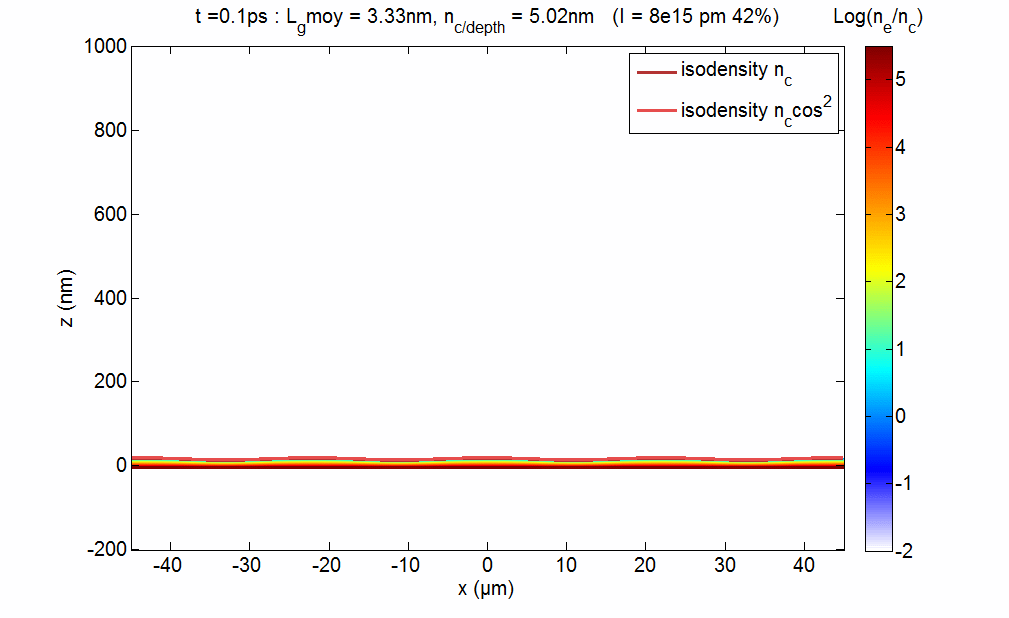The interaction of UHI lasers with initially structured solid targets, and in particular with gratings, is an emerging topic, sometimes called UHI plasmonics. Evidence has recently been obtained, in particular in our group, that it allows for the coupling of the laser field with surface plasmons. This greatly enhances the absorption of laser energy by the target and lead to new acceleration mechanisms where electrons are directly accelerated by these surface plasmons, resulting in stronger and more energetic particle (ions, electrons) emissions [Cec13,Fed15].
We have recently demonstrated how to optically create structured plasmas from initially flat surfaces. These so-called transient plasma gratings [Mon14] are created by initiating plasma expansion at the surface of a solid target with two prepulse that spatially interfere (see figure 5). These TPG will open new possibilities for UHI plasmonics, because their periodicity, depth and shape can be fully controlled optically. They can also be used to measure the E-field of the harmonic beam in the target plane by in situ ptychography [Leb15].

Figure 5 : Principle of transient plasma gratings. Two prepulse beams (I≈ 1016 W/cm2) cross at the surface of an initially solid target, which they strongly ionize. This initiates a plasma expansion with a velocity modulated in space due to the prepulse interferences. This leads to the growth of a transient plasma surface modulation, as illustrated by the hydrodynamic simulations displayed in movie ?? (gray scale: electron density ne, blue curve: isodensity surface g(x) corresponding to the critical plasma density nc). An ultraintense main laser pulse (25 fs, ≈1019 W/cm2) then interacts with this modulated plasma, and generates a beam of high-order harmonics in the specular direction. The diffraction pattern observed on this beam shows that transient plasma gratings can sustain ultrahigh laser intensities.

[Cec13] Ceccotti et al, Phys. Rev. Lett. 111, 185001 (2013)
[Fed15] Fedeli, submitted to Phys. Rev. Lett. (2015)


